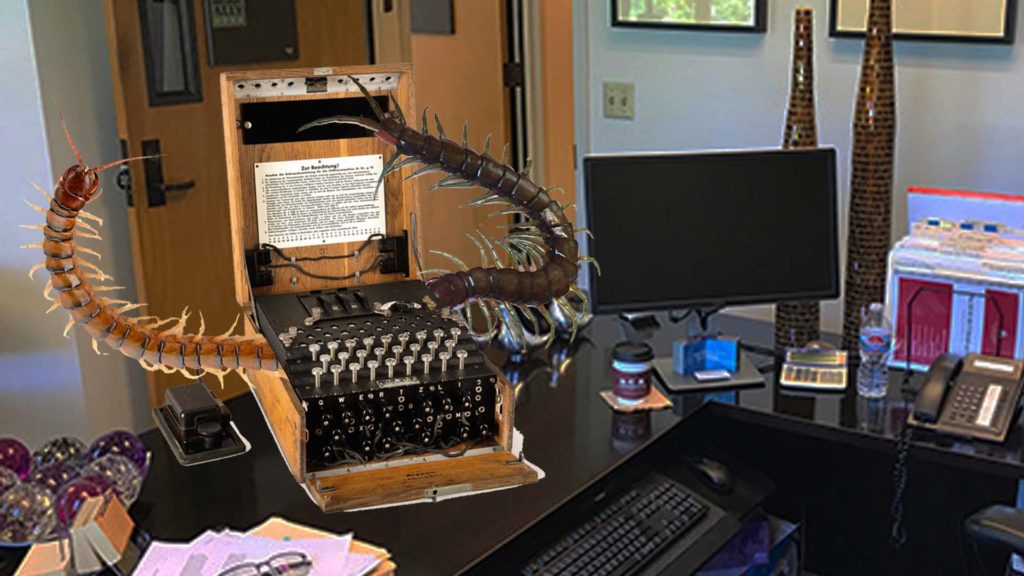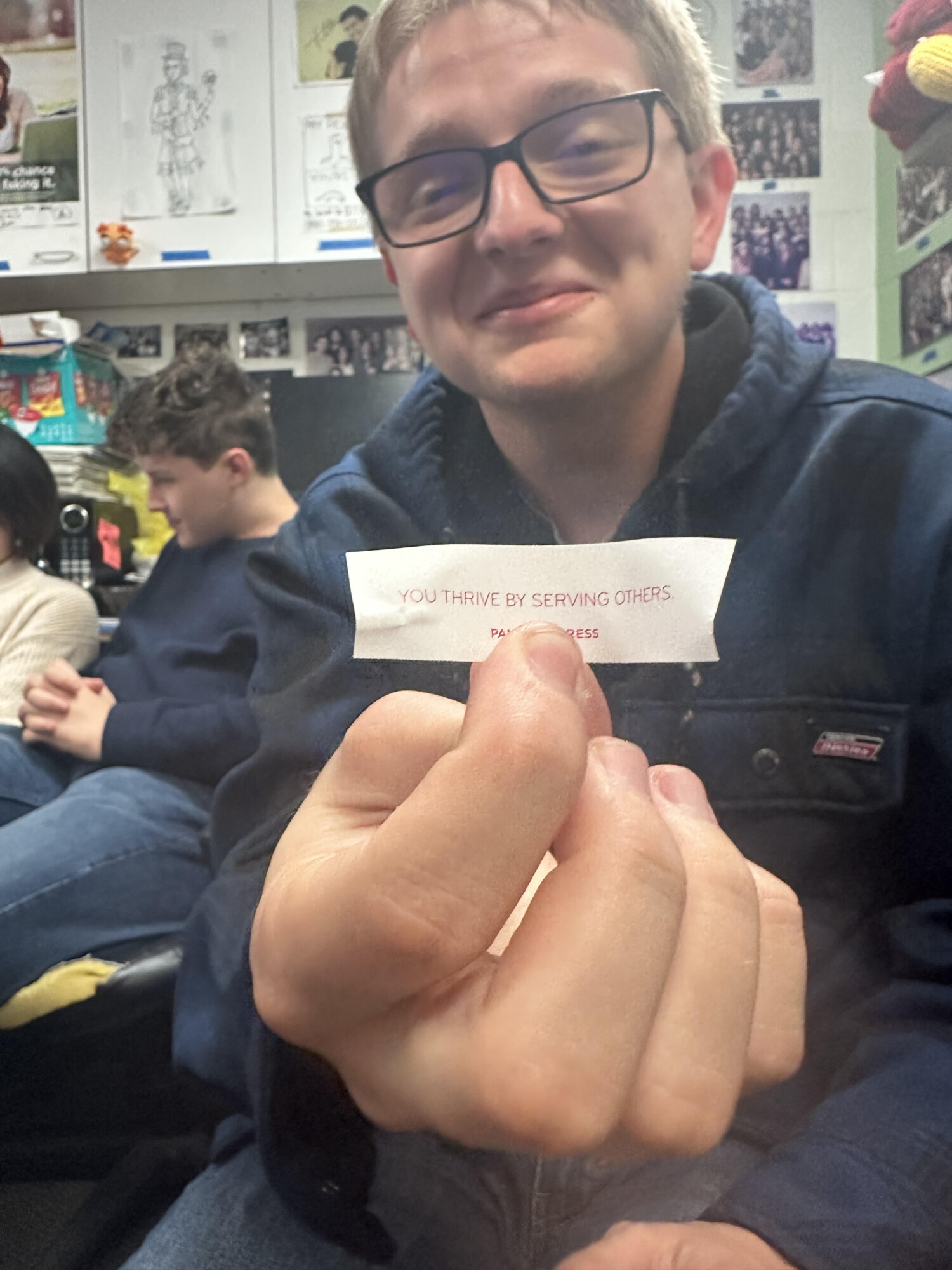
“Cockroach, null pointer, stick bug, ladybug, stack overflow, rhinoceros beetle, moth, caterpillar, infinite recursion, worm, centipede, millipede. These are my favorite bugs, in order,” said Turing.
Photo by Maria Dhilla
Dr. Charles Turing, an entomology professor at San Diego State University and a full member of the San Diego Cryptologist Society, reported struggling to resolve an issue with his latest project, a bug-proof cryptography machine.
According to Turing, his machine is infested with bugs, most likely originating from his lab at SDSU. “This puts my entire work at stake,” Turing claimed. “The whole point was to make a machine that would be free from bugs, but when I was trying to write a simple Caesar cipher, I found a millipede casually strolling through the gears and belts, ruining the ciphertext. This is ridiculous.” The machine, by design, doesn’t have any gaps or openings through which bugs or any other small organisms can get through, making the infestation a mystery in itself.
Turing said that he came up with an idea for his invention after working on some puzzles in the lab. “I was killing time while those useless post-docs were playing Slither.io on their fancy phones when the idea came to me. It’s ingenious, if I do say so myself. You would think that a bug-proof code machine is useless, but I assure you, this thing would’ve made us win World War II two years earlier by blocking out enemy bugs and spelling bees.” When asked about whether his machine introduces any cryptographic advancements, Turing said that he was “so concerned with fixing the bug issue, the actual code part somehow became less important.”
After discovering the problem, Turing attempted to ask for advice in web forums and search engines, with queries including “How to fix bug-ridden code,” or “How to solve cicada crypto machine issue,” but found little success. “Every time I try to search for the solution, I always find something completely unrelated,” he said. “People always try to ask me what language I am coding in, or what system I am using. Apparently, modern cryptography enthusiasts don’t even accept English anymore. I also managed to find something like Cicada 3301, and while it’s an interesting cryptography endeavor, this is the furthest away from what I actually need.”
Turing later brought up the issue to his colleagues at the university, including computer science and bioinformatics professors, but wasn’t able to find a definite solution. “I’m not sure what Charles actually wanted from me,” shared Rick Shapiro, an assistant professor in computer science. “He first asked me to help him with some cryptography issues. When he mentioned a bug, I was wondering if he was having an encoding or implementation problem. He said that his code was working fine, so I was even more confused. He also said something about cockroaches, and that’s where he lost me. He’s the entomologist, why is he bothering me?” Another of Turing’s colleagues, linguistics professor Will Chomsky, refused to comment, only saying, “I am an etymologist, get it right!”
Turing is still struggling to solve the original problem of having actual bugs in his machine. ”I tried pest repellants, but those didn’t work due to the machine’s stupid air-tight design. I even tried luring out a millipede with a byte of an Apple, but that didn’t work either.” Turing has turned to pest control firms as a last-ditch effort, but exterminators have reportedly refused to help, interpreting the issue as being “computer-related.” Computer technicians, on the other hand, refused to help Turing because all of the agents in the call center were busy with other clients.
“I really don’t know where to find answers anymore,” Turing concluded. “Who would’ve thought that such a simple issue would lead to so much headache?”











